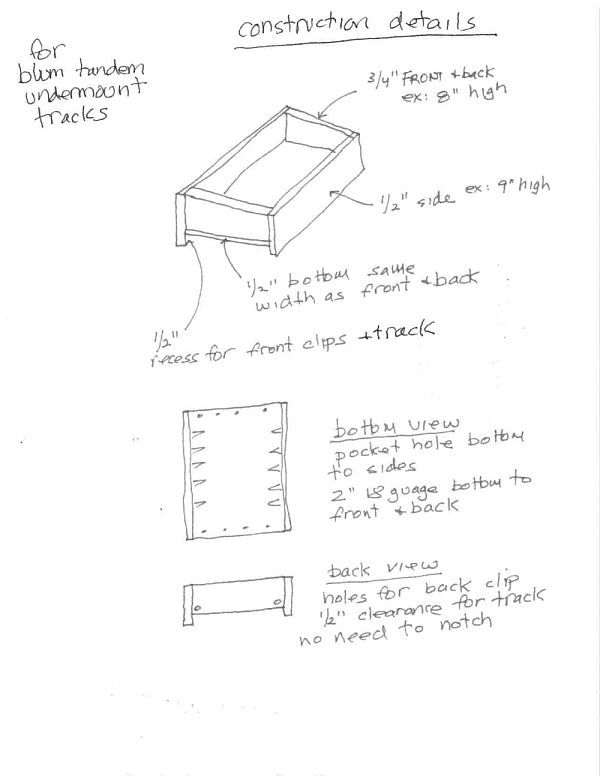Question
A customer would like to put sliding drawers in her lower kitchen cabinets. The cabinets themselves are around 30 inches each and are double doored. The stile that rests between them is around 3 inches. She would like me to remove the stile and attach it to one of the doors, therefore making it possible to put in 2 large slide out drawers instead of 4. They are oak and I cannot find any brads or screws holding the stiles in. They are a commercially made cabinet that came with the house. Anyone have an idea how to remove these? Also, if removed, will it significantly weaken the cabinet?
Forum Responses
(Cabinetmaking Forum)
If you don't see any brads or screws, then it is either mortise and tenon, doweled, or just glued and clamped in place. Chances are, it is mortise and tenon or doweled. On the off-chance that it is just glued, take a straight-edge, score the seams to break the finish and surface fibers (try to go into the wood at least an 1/8" with the new blade - you'll want to do this no matter how it was assembled), and with a block and hammer, tap it from behind to see if it loosens. If it loosens, congrats - it's most likely just glued, and just continue tapping from behind until it comes loose.
If not, it's one of the other assembly methods, and you will have to cut it out using a flush cut saw, a coping saw, a sawzall or jigsaw (whatever you are most comfortable with). Whatever tool you do use, be sure to tape up the surrounding material to avoid damaging the finish.
Be sure the homeowner knows before you start that:
1. You will need to shorten the piece a blade-width on top and bottom to allow for expansion and contraction,
2. Although you will take every precaution, there is a possibility that the finish could be marred in the process,
3. The wood has the possibility of giving out, and a new one will need to be fabricated and finished at extra cost to the homeowner.
You need to make sure the homeowner is aware of the realities before commencing work, otherwise it's on your dime if something should happen. That said, this is really no big deal and the above are not likely to happen. Just take your time, prep the area and you will be fine...
Also, two other things to keep in mind:
1. When attaching the stile to the door, if the cabinet door has bumpers on it, you need to allow for this with a strip of oak as a shim the same thickness as the bumper, otherwise the stile will sit proud of the cabinet when the doors are closed. This is normally addressed with a scoop with a new piece, but this is a retrofit with existing material.
P.S. Make sure the customer knows that when the stile is removed and attached to the door, that unless it is going to be prepped and finished at extra cost, when she opens the doors, an unfinished 3" footprint of where the stile used to be will be visible...
